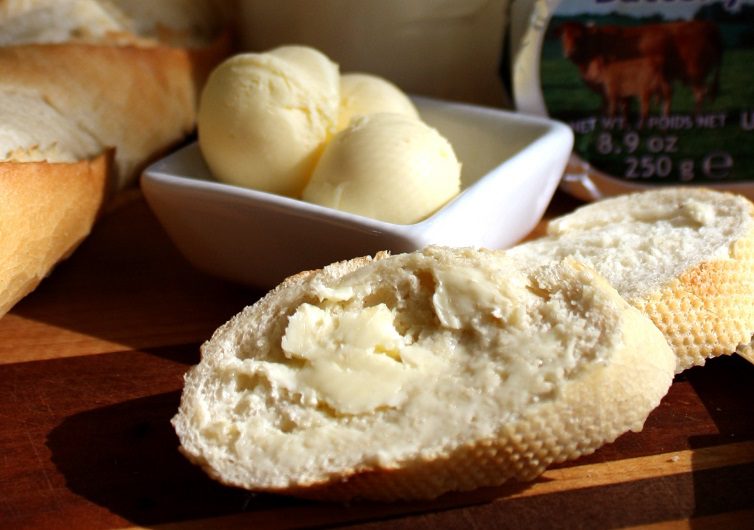The mystery of Canada’s hard butter
February 22, 2021 by DarcieCanadian food writer and cookbook author Julie Van Rosendaal started a minor firestorm recently with a tweet about butter: “Have you noticed it’s no longer soft at room temperature? Watery? Rubbery?” she asked. People chimed in with their own observations – yes, butter does seem different these days, more difficult to spread and remaining hard even when the kitchen is not cold.

Van Rosendaal posited that the changes to the dairy product could be explained by the increased demand that pandemic baking has wrought on the butter supply. The spike in demand may have led farmers to change up their cows’ feed, adding a product – palm fats – to the mix due to pressures on the feed supply. Palm fats increase the amount of fat in the resulting milk and cream and can lead to changes in the structure of the butter churned from the cream.
The situation has received enough attention to cause two trade groups, Dairy Processors Association of Canada and Dairy Farmers of Canada, to weigh in. The latter notes that while there may be differences in butter from one batch to the next, any disparity is due to “seasonal and regional variations in a cow’s diet.” Both groups downplay the anecdotes about hard butter. What say you, Canadian EYB Members? Have you noticed any differences in the texture or other characteristics of your butter?
Categories
- All Posts (6940)
- Antipasto (2135)
- Author Articles (247)
- Book News (935)
- Cookbook Giveaways (983)
- Cookbook Lovers (257)
- Cooking Tips (109)
- Culinary News (299)
- Food Biz People (552)
- Food Online (791)
- Holidays & Celebrations (272)
- New Cookbooks (149)
- Recipes (1500)
- Shelf Life With Susie (231)
- What's New on EYB (133)
Archives
Latest Comments
- Atroyer7 on Danube Cookbook Review and Giveaway
- demomcook on What foods do you look forward to the most for each season?
- demomcook on Danube Cookbook Review and Giveaway
- Darcie on How cookbooks can help build resilience
- mholson3 on Danube Cookbook Review and Giveaway
- Rinshin on How cookbooks can help build resilience
- sarahawker on Danube Cookbook Review and Giveaway
- Sand9 on Danube Cookbook Review and Giveaway
- hankintoby29 on Heritage Cookies of the Mediterranean World – Cookbook Giveaway
- WBB613 on Feasts of Good Fortune Cookbook Giveaway